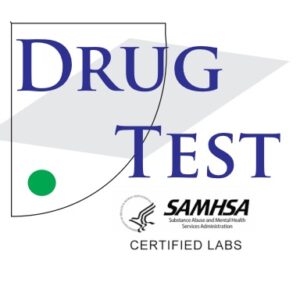Urine drug testing is a commonly used method to detect the presence of drugs or their metabolites in a person’s urine sample. There are various urine drug testing options available, depending on the substances to be screened and the testing requirements. Here are some of the commonly used urine drug testing tests:
Standard 5-Panel Drug Test: This test is the most basic urine drug test and screens for the five most commonly abused drugs: marijuana (THC), cocaine, amphetamines (including methamphetamine), opiates (such as heroin and prescription opioids), and phencyclidine (PCP).
Expanded Drug Panels: Expanded urine drug panels include additional substances beyond the standard 5-panel test. These panels may include screening for drugs such as benzodiazepines, barbiturates, methadone, propoxyphene, methaqualone, synthetic opioids, designer drugs, and other specific substances based on the testing requirements.
Comprehensive Drug Panels: Comprehensive urine drug panels cover a wide range of drugs, including both illicit drugs and prescription medications. These panels can be customized to meet specific testing needs and may include screening for a broad range of substances.
Specific Drug Class Testing: In some cases, urine drug testing may focus on specific drug classes or categories. For example, a test may specifically target opioids, stimulants, sedatives, hallucinogens, or other drug classes based on the testing objectives.
Synthetic Drug Testing: Synthetic drug testing can be included in urine drug testing panels to detect synthetic cannabinoids (such as K2 or Spice) or other synthetic drugs that mimic the effects of illicit substances.
Adulterant Testing: Adulterant testing is performed to detect substances or chemicals that individuals may add to their urine sample to tamper with or mask drug use. Adulterants include substances like bleach, detergents, or acidic solutions that may interfere with drug detection. Testing for adulterants helps ensure the integrity of the urine sample.
It’s important to note that the specific tests and panel configurations may vary depending on the testing provider, laboratory, or regulatory requirements. The substances screened, cutoff levels, and detection windows can also vary.
Showing all 4 results
-

LabCorp 11 Panel Drug & Alcohol Panel
$85.00 -

Labcorp Cotinine Test ( Nicotine Metabolite)
$60.00 -

Quest Diagnostics® Drug Test for DOT SAP Evaluation for Return to Duty
$62.50 – $90.50Select options This product has multiple variants. The options may be chosen on the product page -

SAP-Drug Test for DOT SAP Evaluation for Return to Duty
$65.00
